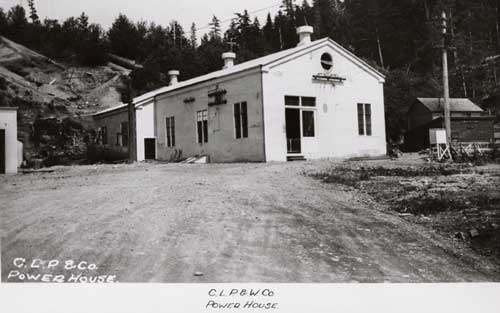 Ketchikan, Alaska - Let There Be Light! Citizens Light & Power and then KPU By June Allen November 16, 2004
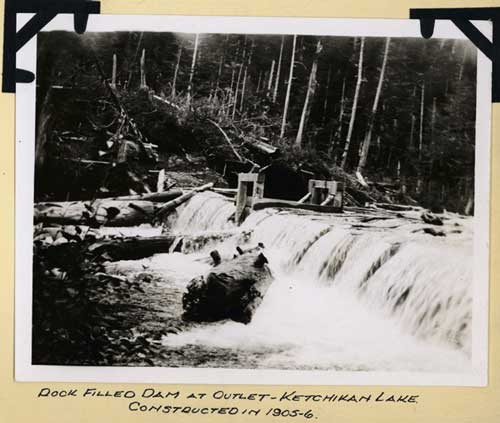 Appraisement, Citizens Light, Power & Water Co. Author: General Appraisal Company Donor: City of Ketchikan, THS 72.4.7.2
Fresh water was in Ketchikan Creek or "where you found it" in 1900. In a bow to cleanliness, a hand-laundry business for the more fastidious was perched by a creek coursing down the steep hillside above where today's Red Men hall is located on Main Street. Famous pioneer photographer Harriet Hunt had to carry buckets of water from a creek to her second-story Front Street home in order to develop her photographs. Volunteer firemen, without pump or equipment, could at first only form a bucket brigade. 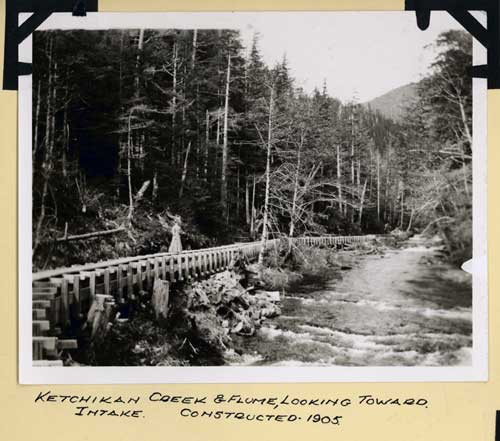 Author: General Appraisal Company Donor: City of Ketchikan, THS 72.4.7.2
In 1901 a man named Watson J. Hill of Juneau approached Ketchikan's common council and was granted a franchise for a Ketchikan Light & Power Company. The gentleman sailed back to Juneau but any progress was stalled when he failed to return. So on April 20, 1903, the city council gave the franchise to the mostly local Citizens Light, Power and Water Co., the charter to run for fifteen years. It was then that the city's utility progress began in earnest! John Lhote and Nels Pierson negotiated with Citizens Light & Power to build a dam on the creek 5,200 feet from tidewater. They got to work immediately and built a 15-foot-high log-cribbed dam and a wooden flume to carry water to a new powerhouse, which was to be built on the bank of the creek. The cost of dam and flume construction was $450 - which would be about $9,250 in today's dollars. 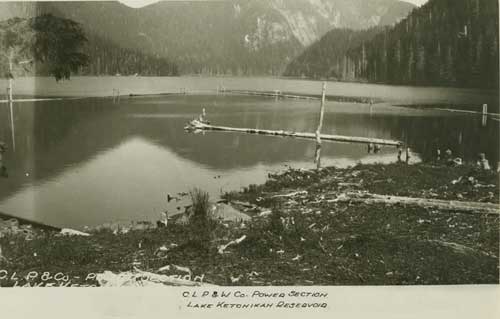 Appraisement, Citizens Light, Power & Water Co. Author: General Appraisal Company Donor: City of Ketchikan, THS 72.4.7.2
And it was also in 1903 that H.Z. Burkhart, who had operated a sawmill at a mining operation at Dolomi on Prince of Wales, brought his equipment to Ketchikan and with J.J. Daly and C.M. Summers formed the Ketchikan Power Co. to operate a sawmill. (He also built the turreted Queen Anne home at the top of Main Street in 1906, the city's last remaining "castle" from its past.) His mill, later called simply "the spruce mill," was located right on the downtown waterfront. The progressive little town of Ketchikan now had not only a good-sized sawmill but a source of shared power that would be put to good use in power-short years to come. In addition, the new mill set to work providing steam heat to downtown buildings! 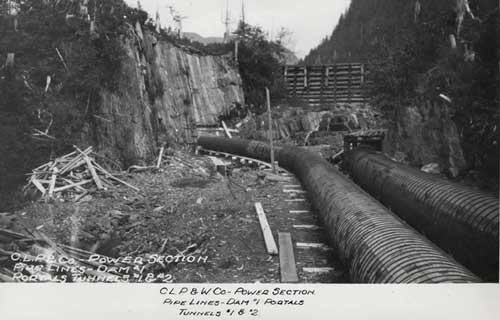 Author: General Appraisal Company Donor: City of Ketchikan, THS 72.4.7.2
In 1906 a four-foot-high dam 110 feet long was built at the outlet of Ketchikan Lakes and a 400-foot-long penstock (a 28-inch barrel-stave 'waterpipe') was installed. Then came a 240 hp water turbine and 120 KW generator. Things were moving fast. Citizens Light & Power in the same year built an office building, which oldtimers recalled was on Mission Street between Front and Main. 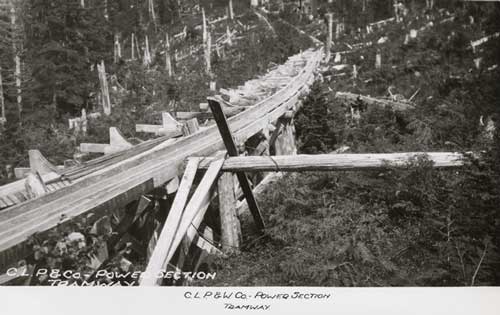 Appraisement, Citizens Light, Power & Water Co. Author: General Appraisal Company Donor: City of Ketchikan, THS 72.4.7.2
Work continued on expansion of the Ketchikan Lakes capabilities, with a dam between the two lakes built in 1910. Larger and more equipment was installed to keep up with demand. It was essential! In was in 1910 or 1911 that J.R. Heckman, longtime cannery superintendent at Loring and involved Ketchikan businessman and banker, invented the floating fish trap. It was a contraption loved by owner cannery companies, hated by independent fishermen, and the greatest stimulus in Ketchikan's commercial history! Stationary fish traps had been used more or less effectively around the world for centuries. But a floating trap, seasonally stationed with anchors at prime locations on salmon migration routes, could harvest many, many times the volume of fish formerly caught by fishing boats! 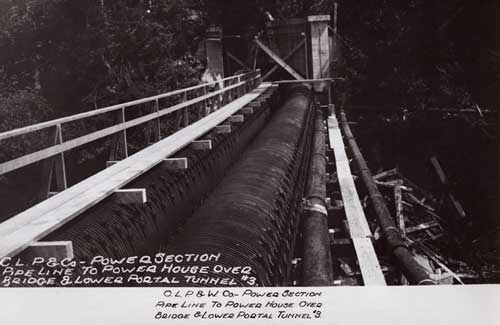 Pipe Line To Power House Over Bridge & Lower Portal Tunnel #3 Appraisement, Citizens Light, Power & Water Co. Author: General Appraisal Company Donor: City of Ketchikan, THS 72.4.7.2
By 1920, just two decades after Incorporation of the hamlet of 400 souls, Ketchikan was suddenly Alaska's industrial and commercial leader, headquarters for the area's mosquito fleet of trollers as well as new home to the North Pacific halibut fleet and in addition could boast canneries, logging, bustling sawmills and producing regional mines. It was now the home of 2,500 people, living in what the Pathfinder magazine issue of August 1920, said was a city that "has steadily come to the front until today, without semblance of a boom has grown into an important place in the commercial world, and is recognized as the most thriving city in Alaska."
Appraisement, Citizens Light, Power & Water Co. Author: General Appraisal Company Donor: City of Ketchikan, THS 72.4.7.2
In 1925 the power company built a three-story concrete, privately owned Citizens Light & Power building at 334 Front Street, today's City Hall. The architectural style is called "Chicago Commercial." The ground floor had sales rooms for electrical appliances and general offices; the second floor contained a machine shop and smaller generating equipment. The third floor housed warehouse space, drafting rooms and the telephone exchange. Today's fourth floor was a later addition (1952). 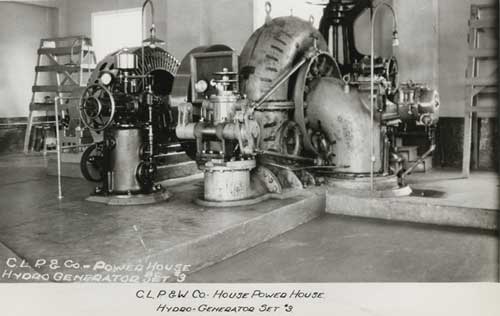 Appraisement, Citizens Light, Power & Water Co. Author: General Appraisal Company Donor: City of Ketchikan, THS 72.4.7.2
The first few years of city ownership didn't go so well. Electrical rates went up even though financially stressed customers sometimes sat in the dark to save money and had thrown away electric heaters. The outbreak of World War II in 1941, however, took minds off the power problem. At the end of the war, a new, modern era was coming and more population growth with it. In 1947 Ketchikan recognized the power potential of Beaver Falls south of town. A log dam at the lakes and a power plant at Beaver Falls added to KPU's power capacity. 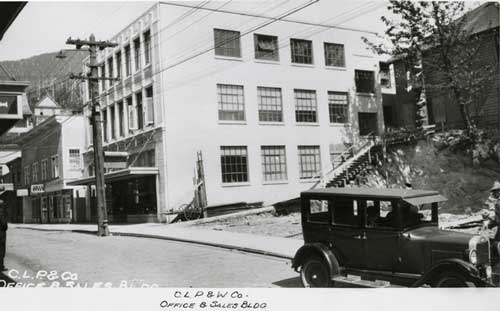 Appraisement, Citizens Light, Power & Water Co. Author: General Appraisal Company Donor: City of Ketchikan, THS 72.4.7.2
Today's future power picture is positive, with work underway for a Swan Lake-Lake Tyee (Wrangell) intertie that will eventually tie in with other Southeastern communities in a big loop that will support each of the towns in an interdependent circle. Each town no doubt has tales of its own pioneers, its own successes and failures. This story sheds light on part of Ketchikan's power past. 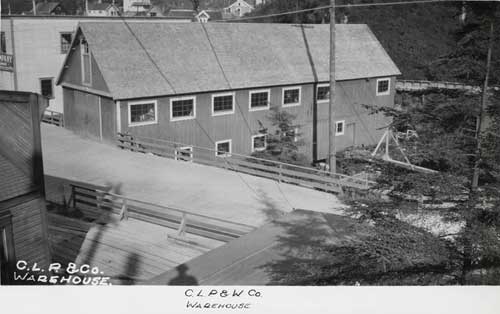 Appraisement, Citizens Light, Power & Water Co. Author: General Appraisal Company Donor: City of Ketchikan, THS 72.4.7.2
Postscript: Frank Silvis saw the potential of the region's power picture and used it for his benefit. His contemporary neighbor, pioneer Joe Mahoney - did they ever meet? - found his own pair of now-named Mahoney Lakes up George Inlet. He used the power for his zinc/lead mine, which unhappily proved unprofitable, and failed. Mahoney, however, is well remembered by baseball fans for his many successes as one of the star players on Ketchikan's earliest ball teams.
All rights reserved. Not to be reprinted in any form without the written permission of June Allen.
|
